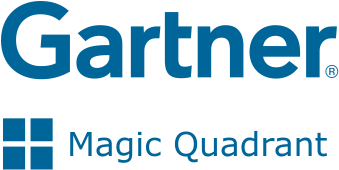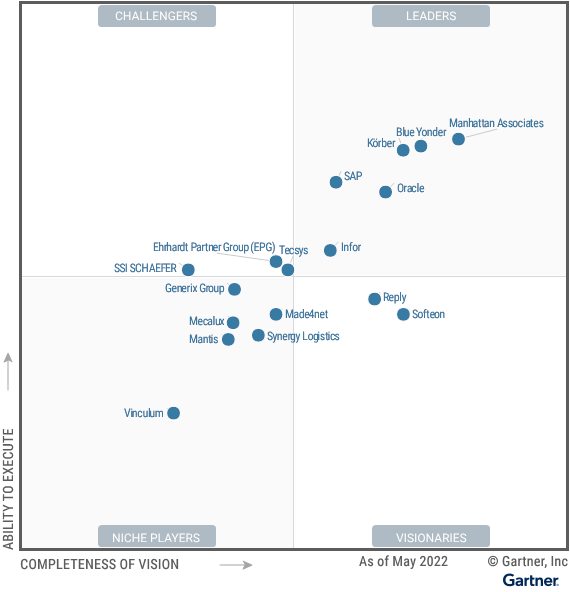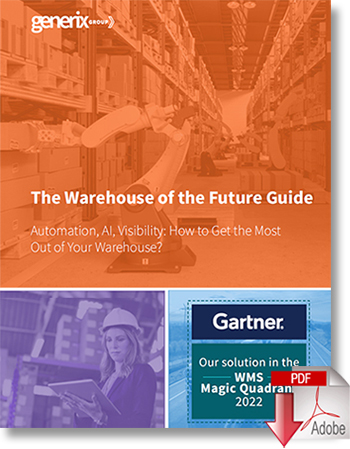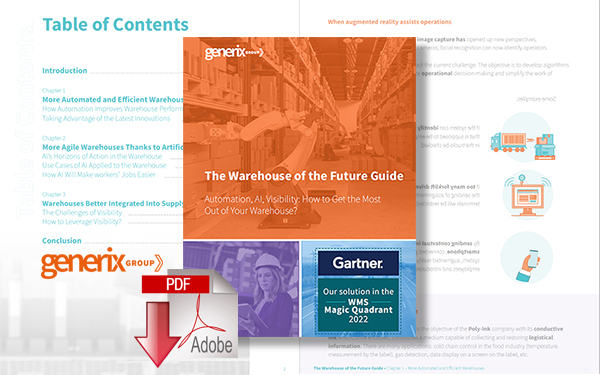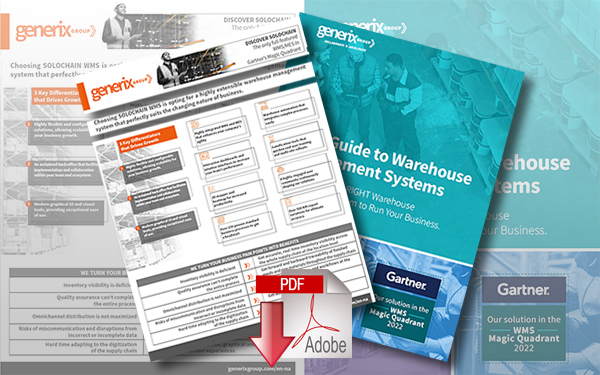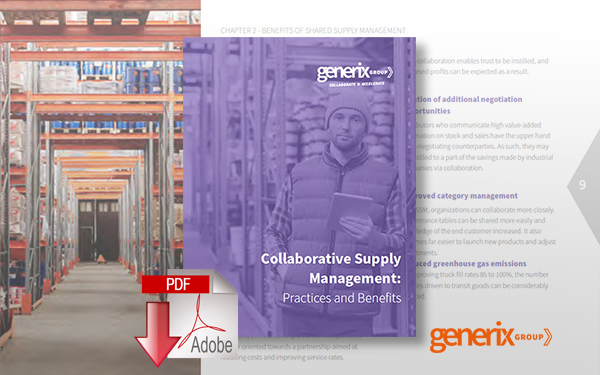Make the Best of Gartner Warehouse Management Systems Magic Quadrant Report

Recognized as the most reliable reference in the business, Gartner’s Magic Quadrant™ for Warehouse Management Systems yearly report offers prospective buyers valuable information about leading WMS providers on the market.
A Quick Guide to Understand Gartner's Warehouse Management Systems Magic Quadrant
If you’ve been researching and shortlisting Warehouse Management Systems (WMS) for your company, chances are you’ve come across the Gartner WMS Magic Quadrant a few times already.
Touted as the most reliable reference in the business, Gartner’s yearly report offers prospective buyers valuable information about leading WMS providers on the market.
It’s no surprise, then, that it never fails to be mentioned by vendors who made the list.
If you haven’t yet taken a moment to give it a read, you most certainly should.
Access and read: Generix Group named in the 2022 Gartner® Magic Quadrant™ for Warehouse Management Systems (WMS) for the 4th consecutive year.
Useful though it may be, the Magic Quadrant’s wealth of information can be daunting.
As stated in the report, “there’s near-functional parity for core WMS capabilities across WMS providers” who made the list. This is to say that, when it comes to differentiating and evaluating the different WMS options on the market, the devil is in the details. And, when the devil lurks about, one can easily be led astray.
This article is meant as a quick guide to Gartner’s WMS Magic Quadrant. The objective is to help you better understand its content so that you may draw the right conclusions in your efforts to identify a WMS solution adapted to your company’s requirements.
How the Magic Quadrant Evaluates WMS Vendors and Service Providers
The first thing to understand about the report is the two criteria that fundamentally structure its evaluation of WMS vendors and service providers: Completeness of Vision and the Ability to Execute.
“Completeness of Vision” evaluates a vendor’s overall understanding of the market, their awareness of new innovations, and their vision for next-generation WMS and Supply Chain Execution (SCE) solutions. It also takes into account a company’s willingness to invest in addressing their solution’s TCO and the customer’s time to value. Another thing it measures is the sum of a vendor’s proven efforts to develop an SCE convergence strategy.
As for the “Ability to Execute”, it refers to a WMS vendor’s track record in commercializing, delivering, and deploying innovative solutions. It looks at a vendor’s ability to effectively translate its customers’ business goals and objectives into specific WMS functional requirements. Gartner’s analysts also measure a vendor or service provider’s ability to deliver value through service, consulting, and training, on top of the company’s long-term viability.
How the Magic Quadrant Evaluates WMS Capabilities
Of course, the report also looks into the actual products being marketed, the Warehouse Management Systems themselves. On top of the core and extended WMS capabilities, the Gartner report considers a number of WMS features.
It looks, for instance, at the strengths and limitations of a WMS’s technical architecture, and how those affect its integration capabilities. The evaluation also accounts for how a WMS is able to support cross-functional process orchestration (think, for example, of how Generix Solochain WMS can serve to bolster a company’s back-office capabilities through integration with its ERP system).
Download the Papers: SOLOCHAIN WMS and the Guide to Warehouse Management Systems
Gartner's Magic Quadrant for Warehouse Management Systems
By Simon Tunstall, Dwight Klappich, Rishabh Narang | Published 1 June 2022
WMS vendors are challenging established leaders in a mature market by targeting critical outcomes such as cost of ownership, automation support, adaptability, and cloud services. Supply chain technology leaders should use this research to understand the current state of the WMS market.
Market Definition/Description: Gartner defines a warehouse management system (WMS) as “a software application that helps manage and intelligently execute the operations of a warehouse or distribution center (DC).”
These systems natively exploit mobile devices along with bar codes and, possibly, RFID scanning/sensing to form the transactional foundation of a WMS. This enables efficiencies of directed work activity and the delivery of accurate information in near real-time. Gartner also includes integrated functionality - what we refer to as extended WMS capabilities (see Apply an Architectural Framework to Stratifying Warehouse Management Systems) as components of a WMS evaluation.
View: Warehouse Management Systems Reviews and Ratings
WMS Market Considerations
All solutions in the Magic Quadrant for Warehouse Management Systems support basic core WMS capabilities. Many also support various levels of extended WMSs. Core WMS capabilities are the basic functions of receiving, put-away, storing, counting and picking, packing, and shipping goods. Extended WMS capabilities are value-added capabilities that supplement core functions, such as labor management, slotting, yard management, and dock scheduling (see Apply an Architectural Framework to Stratifying Warehouse Management Systems).
Gartner's Magic Quadrant
Figure 1: Magic Quadrant for Warehouse Management Systems
The Magic Quadrant for warehouse management systems shows 17 providers placed in either the Leaders, Challengers, Visionaries, or Niche Players quadrant, as of June 2022. Providers are positioned based on their Ability to Execute and Completeness of Vision.
“We are proud to be named in the 2022 edition of the Gartner®Magic Quadrant. We are dedicated, in close collaboration with our customers, to continuously improving the functional richness of our solutions. Once again, this year, we think we continue to be recognized in an extremely competitive environment and maintain our position as a Leader in this report. As part of our Boost Together 2025 strategic plan, we are committed to further strengthening these investments, building on the Agile transformation of our R&D organization. Our customers benefit from the expertise of our highly international and multidisciplinary teams, including our R&D office based in North America.” - Isabelle Badoc, Product Marketing Director, Supply Chain Execution, Generix Group
Vendor Strengths and Cautions
 Generix Group, a Niche Player in this Magic Quadrant, provides a portfolio of SCM solutions with two WMSs, as well as transportation and yard management, logistics order and replenishment management, and electronic data interchange (EDI). In April 2022, Generix announced that its management, Pléiade Investissement and Montefiore Investment entered into exclusive negotiations with a view to conclude an agreement leading to a public tender offer. Approximately 53% of Generix’s $83.5 million in revenue comes from WMS, and more than 250 of its 800 employees are focused on WMS.
Generix Group, a Niche Player in this Magic Quadrant, provides a portfolio of SCM solutions with two WMSs, as well as transportation and yard management, logistics order and replenishment management, and electronic data interchange (EDI). In April 2022, Generix announced that its management, Pléiade Investissement and Montefiore Investment entered into exclusive negotiations with a view to conclude an agreement leading to a public tender offer. Approximately 53% of Generix’s $83.5 million in revenue comes from WMS, and more than 250 of its 800 employees are focused on WMS.
Of its 411 WMS customers, 70% are based in Europe, accounting for 80% of its revenue, with around 21% of its customers in North America and the remainder (9%) distributed in other regions. Its WMSs are deployed in 35 countries with the largest market in France (more than 140 customers). Seventy-nine percent of Generix’s WMS revenue is from consumer products manufacturers, retail, and 3PL, with 3PLs representing its largest customer segment and retail a close second. It offers two distinct WMS solutions: Generix WMS, and SOLOCHAIN WMS, which was initially developed by its North American business unit. Generix WMS is deployed across 323 customers and approximately 800 warehouses. SOLOCHAIN is a contemporary WMS and manufacturing execution system (MES) solution with 88 customers in Canada, the U.S., and Mexico.
Generix’s WMSs are most often used in Level 2 and Level 3 warehouse operations, but Generix WMS in particular can scale to Level 4 and Level 5. However, Generix lacks a warehouse control system of its own for highly automated Level 5 warehouse operations. Its preferred deployment method for new customers is a dedicated cloud using a recurring SaaS subscription pricing model. More than 90% of its new contracts are SaaS, with 31% of its existing customers deployed on the dedicated cloud.
Generix Group Strengths
- Generix has a strong European presence (especially in France) with entities also in Benelux, Italy, Spain, and Portugal. It is also growing in other regions, with almost a third of its business now outside its home geography and entities in North America and Brazil.
- SOLOCHAIN WMS is well-suited to combination manufacturing and warehouse operations because it offers a seamlessly integrated WMS and MES. This goes beyond simple transactional integration and addresses the complexities of process integration between the warehouse and the shop floor.
- SOLOCHAIN WMS offers powerful visual tools to facilitate, accelerate and enhance implementations as well as provide ongoing support. It provides a model-driven architecture and back-office capabilities that document every client interaction in the application, facilitating upgrades.
- Generix supports some Supply Chain Execution (SCE) convergence by offering several products complementary to WMSs, such as a transportation management system (TMS), and other capabilities.
Register and Access: Get the Full 2022 Magic Quadrant for Warehouse Management Systems
Gartner disclaimer: GARTNER and Magic Quadrant are registered trademarks and service marks of Gartner, Inc. and/or its affiliates in the U.S. and internationally and are used herein with permission. All rights reserved. Gartner does not endorse any vendor, product, or service depicted in our research publications, and does not advise technology users to select only those vendors with the highest ratings or other designations. Gartner research publications consist of the opinions of Gartner research organization and should not be construed as statements of fact. Gartner disclaims all warranties, expressed or implied, with respect to this research, including any warranties of merchantability or fitness for a particular purpose.
Time to market, time to value, and the quality of technical support are important to WMS buyers, as those can have a significant impact on ROI. Consequently, the Magic Quadrant attributes a lot of importance to the tools and the technology included in the WMS that are meant to facilitate the solution’s implementation and its continuous development.
And then there’s the WMS’s long-term viability. A WMS represents a significant investment and one that fundamentally structures a company’s operations. Once in place, it’s unlikely to change for years to come. It’s therefore critical that the system be able to deliver the required efficiencies and competitive edge companies seek in a WMS for the foreseeable future.
How to Leverage the Magic Quadrant to Select the Right WMS
Now, if you’re anything like me, the first thing you did when you opened the report is go straight to the Magic Quadrant itself: The Gartner Magic Quadrant for WMS.
As we can see, the two criteria discussed above structure the graph. However, we’re also given new concepts: Niche Players, Visionaries, Leaders, and Challengers.
At first glance, it would be tempting to assume that prospective buyers should immediately opt for a WMS from the companies that rank well in the Leaders quadrant. That assumption, however, would be misguided. Put it this way: everybody wants a fancy car, but an ATV might be better suited to your needs if a forest is where you do your driving.
The point is, when buying a WMS, it’s critical to select a system that is truly adapted to your operation’s level of complexity. It’s equally important that the solution’s Total Cost of Ownership (TCO) be aligned with your company’s financial capability.
The Magic Quadrant considers several types of vendors, from application mega-vendors, like Oracle and SAP, to independent software vendors like the Generix Group. Most of the Leaders seen above are mega-vendors who intend their WMS for very complex operations with high levels of automation, companies that require advanced functionalities from their WMS that less complex operations do not. Needless to say: such WMS functionalities drive up its TOC.
Statistics show, however, that the majority of warehouse operations are not so complex as to require expensive advanced functionalities.
Read Michael Keenan's: What Is a Warehouse Management System? Definition and Software Review
Everything else being equal, most companies are far more interested in:
- Ease of use
- Reliability
- Service and support
- WMS features that are adapted to their industry
- A lower TOC
Therefore, unless your company operates at Gartner’s Level 4 or 5 of complexity, you are far more likely to maximize your ROI by looking into the systems sold by specialist suite vendors, many of which are found in the Niche Players quadrant. To help you find out which is best adapted to your operation, Gartner summarizes its findings in the Magic Quadrant.
Take, for example, a growing company in the Food & Beverage industry that processes and distributes meal kits. While it would benefit from any of the WMS in the Magic Quadrant, it appears that the SOLOCHAIN WMS/MES sold by Generix provides features that are perfectly well adapted to its requirements.
SOLOCHAIN comes fully integrated with Manufacturing Execution System capabilities and Generix provides a portfolio of SCM solutions to manage all distribution logistics. SOLOCHAIN is available as SaaS, which significantly reduces the initial expenditures to acquire it, making it far more accessible to most companies than a more complex solution.
SOLOCHAIN, further reports Gartner, boasts powerful visual tools that facilitate, accelerate, and enhance implementation. Furthermore, its model-driven architecture and built-in integration capabilities make it one of the most configurable and scalable solutions in its category.
At the end of the day, the Magic Quadrant enables prospective buyers to determine that, while SOLOCHAIN may not be implemented in many Level 5 warehouse operations, it offers all the features a meal-kitting company might require of its WMS to support current operations, scale with agility, and protect its capital.
Beyond the Magic Quadrant: Gartner’s Critical Capabilities for WMS
Gartner’s Magic Quadrant is an indispensable resource for any company on the market for a WMS. So is its companion piece, Gartner’s Critical Capabilities for WMS. In that report, Gartner shifts the focus from vendor to the product as it takes a much more in-depth look at WMS features such as core and extended capabilities, adaptability, usability, ability to support automated MHE and distribution environments, etc.
Together, these reports empower stakeholders at distribution and manufacturing companies to select the Warehouse Management System best adapted to their requirements, to the complexity of their existing infrastructure, and to their financial resources.
About Generix Group North America
At Generix Group North America, we provide a series of solutions within our Supply Chain Hub Product Suite to create efficiencies across your entire supply chain. Our solutions are in use around the world and our experience is second-to-none.
We invite you to contact us to learn more.
Download our Guide to the Warehouse of the Future
Related Content: 3 Warehouse Management System Articles from Generix Group;
- Achieving Exponential Growth with Your Warehouse Management System
- Manufacturing: Your Warehouse Management System Ecommerce Requirements Checklist
- Transport Time and Costs: The 4 Advantages of the Generix solutions
Webinar: The Advantages of Automation & Robotization Technologies Integrated within a SaaS WMS
Now Available On Demand
Related Resources
The Warehouse of the Future Guide Now!
The purpose of this guide is to provide you with answers to questions and help you prepare your logistics for a new era specifically when it comes to providing the best in automation, robotization, artificial Intelligence, and supply chain visibility solutions. Download Now!
SOLOCHAIN WMS and the Guide to Warehouse Management Systems
In these 2 'papers' Solochain WMS, we detail Manufacturing Execution System capabilities and Generix's portfolio of SCM solutions to manage all distribution logistics, and the Guide to Warehouse Management Systems, designed as a tool, to help you make the right choice to understand the marketplace and its issues, the functional scope of Warehouse Management Systems. Download Now!
Practices and Benefits of Collaborative Supply Management
To improve Supply Chain performance, the time has come for those involved to collaborate and pool their resources, see the details in this ebook. Download Now!
More Resources from Generix Group
Related Article: Expanding Your Retail Horizons and How to Find the Right Fulfillment Services

